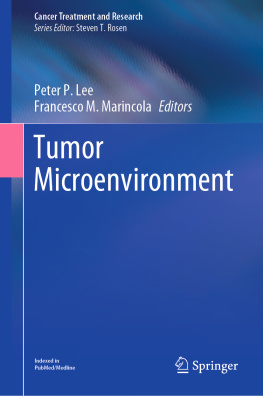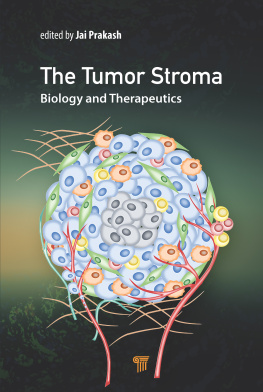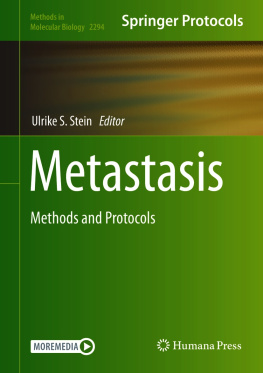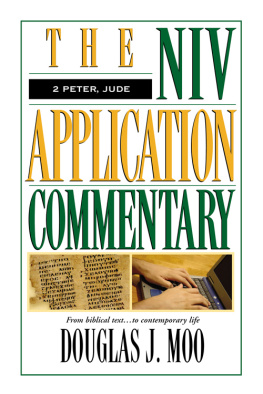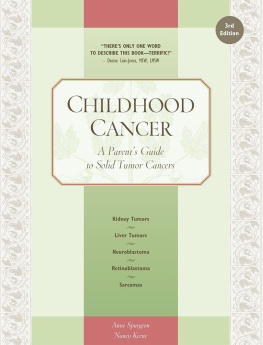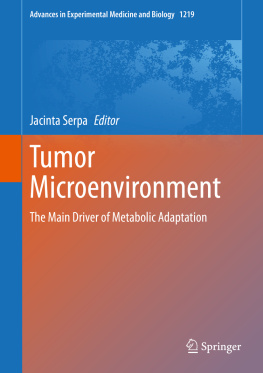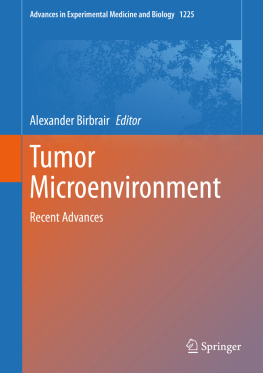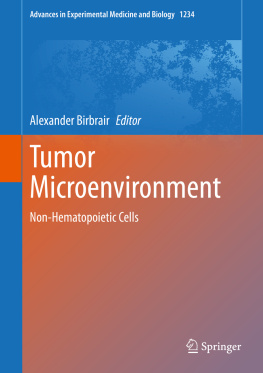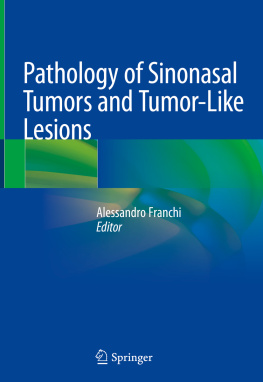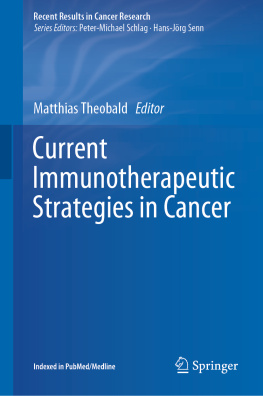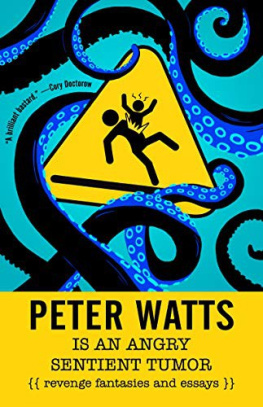Peter P. Lee - Tumor Microenvironment
Here you can read online Peter P. Lee - Tumor Microenvironment full text of the book (entire story) in english for free. Download pdf and epub, get meaning, cover and reviews about this ebook. year: 2020, publisher: Springer International Publishing, genre: Home and family. Description of the work, (preface) as well as reviews are available. Best literature library LitArk.com created for fans of good reading and offers a wide selection of genres:
Romance novel
Science fiction
Adventure
Detective
Science
History
Home and family
Prose
Art
Politics
Computer
Non-fiction
Religion
Business
Children
Humor
Choose a favorite category and find really read worthwhile books. Enjoy immersion in the world of imagination, feel the emotions of the characters or learn something new for yourself, make an fascinating discovery.
- Book:Tumor Microenvironment
- Author:
- Publisher:Springer International Publishing
- Genre:
- Year:2020
- Rating:4 / 5
- Favourites:Add to favourites
- Your mark:
- 80
- 1
- 2
- 3
- 4
- 5
Tumor Microenvironment: summary, description and annotation
We offer to read an annotation, description, summary or preface (depends on what the author of the book "Tumor Microenvironment" wrote himself). If you haven't found the necessary information about the book — write in the comments, we will try to find it.
Tumor Microenvironment — read online for free the complete book (whole text) full work
Below is the text of the book, divided by pages. System saving the place of the last page read, allows you to conveniently read the book "Tumor Microenvironment" online for free, without having to search again every time where you left off. Put a bookmark, and you can go to the page where you finished reading at any time.
Font size:
Interval:
Bookmark:
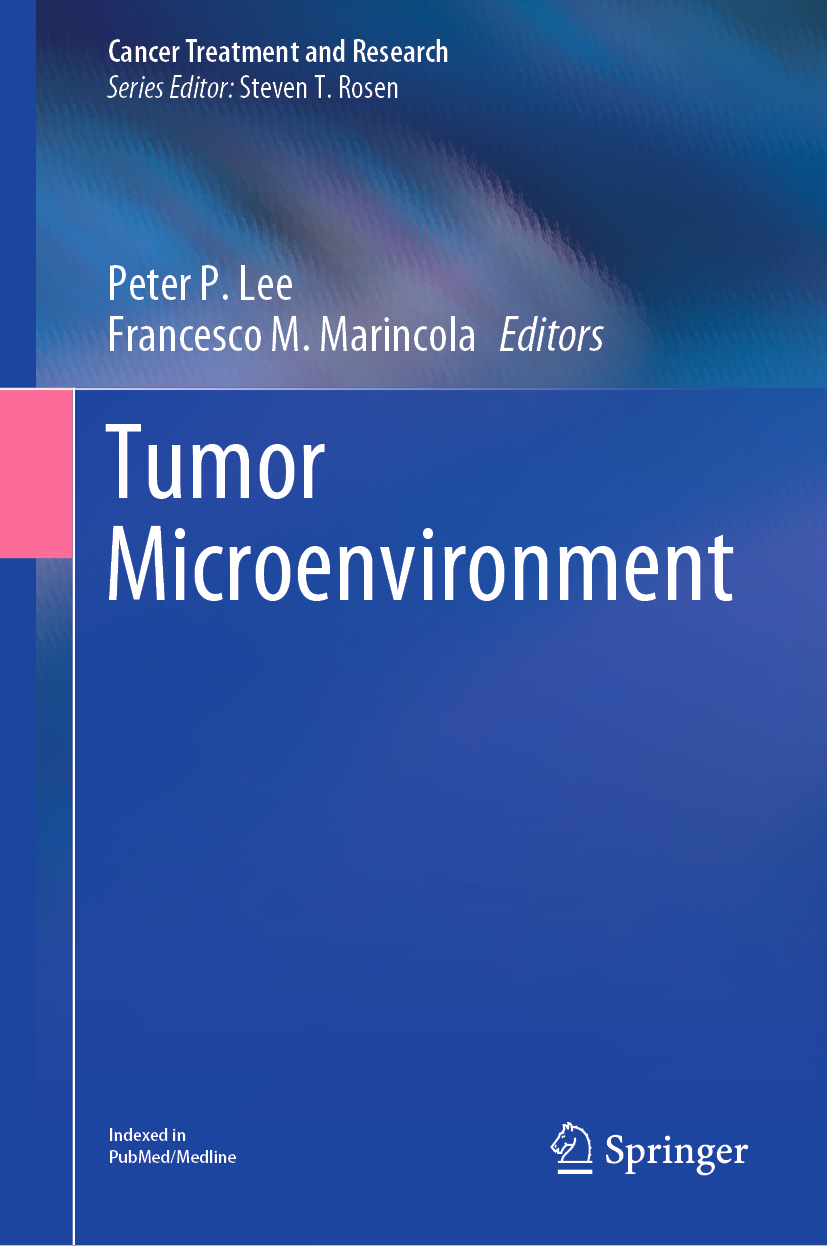
This book series provides detailed updates on the state of the art in the treatment of different forms of cancer and also covers a wide spectrum of topics of current research interest. Clinicians will benefit from expert analysis of both standard treatment options and the latest therapeutic innovations and from provision of clear guidance on the management of clinical challenges in daily practice. The research-oriented volumes focus on aspects ranging from advances in basic science through to new treatment tools and evaluation of treatment safety and efficacy. Each volume is edited and authored by leading authorities in the topic under consideration. In providing cutting-edge information on cancer treatment and research, the series will appeal to a wide and interdisciplinary readership. The series is listed in PubMed/Index Medicus.
More information about this series at http://www.springer.com/series/5808

This Springer imprint is published by the registered company Springer Nature Switzerland AG
The registered company address is: Gewerbestrasse 11, 6330 Cham, Switzerland
Adoptive Cellular Therapy
CCRC-C motif chemokine Receptor
CIRCancer Immune Responsiveness
CITCheckpoint Inhibitor Therapy
DAMPsDamage Associated Molecular Patterns
FDAFood and Drug Administration
HMB1High-mobility group box protein 1
ICDImmunogenic Cell Death
ICRImmunologic Constant of Rejection
IFNInterferon
IOImmune Oncology
MHCMajor Histocompatibility Complex
MOAMechanism Of Action
PD-1Programmed Cell Death-1
PDL-1Programmed death ligand-1
TCGAThe Cancer Genome Atlas
TILTumor-Infiltrating Lymphocytes
TISTumor Inflammation Signature
TMETumor Microenvironment
The spatial distribution, density, and functional orientation of intratumoral immune infiltrates define the continuum of cancer immune surveillance. Variables clustered in a four-dimensional space and time contribute to cancer immune phenotypes: genetic background of the host, somatic evolution of cancer cells, environmental influences, and dynamic changes molded by spontaneous or treatment-induced host immune response. Unstable cancer genetics can activate almost infinite paths to promote survival during this evolutionary process. However, tumors have to confront a bottleneck determined by highly conserved mechanisms of innate and adaptive immune recognition. This interaction limits growth strategies to a binary choice: either adopt an orderly progression of essential genetic alterations that parallels the differentiation of stem cells during organ development or follow a stochastic hyper mutational path that stimulates multiple tissue regenerating properties by surrounding tissues like in a healing wound at the cost of creating a hyperactive environment in excess of chemo-attractive and inflammatory processes. This in turn is conducive to intratumoral immune infiltration and activation. Increasing knowledge is refining this multidimensional and dynamic view of cancer evolution and its prognostic and therapeutic implications. Direct analysis of the tumor microenvironment (TME) can dissect the biology underlying cancer immune responsiveness (CIR) by looking for predictors of response, understanding mechanisms of action (MOA) of therapeutics, and documenting strategies adopted by cancer cells to escape immune control. These elements will be the focus of this book.
Our view of tumors has greatly expanded from simply a mass of homogeneous cancer cells to a complex ecosystem consisting of heterogeneous cancer cells, stromal cells, and immune cellscollectively termed the tumor microenvironment (TME). Accumulating evidence demonstrate that patient outcome is significantly impacted by the immune contexture of the tumor as a reflection of host immune surveillance. Beyond numbers, it is also becoming recognized that the spatial distribution and functional orientation of immune cells infiltrating tumors define the continuum of cancer immune surveillance, its natural history, and responsiveness to treatment [1]. We have long advocated the use of serially obtained tumor biopsies for a dynamic understanding of cancer immune responsiveness (CIR) with the goal of identifying predictors (from pre-treatment samples), documenting MOAs (on treatment samples), and understanding immune escape (post-treatment biopsies) [2, 3]. This approach led to the original observation that immune responsiveness might be predetermined by a tumor microenvironment conducive to immune recognition [4, 5] in the context of a melanoma differentiation antigen-based vaccine administered in combination with human recombinant interleukin-2. Ranking of gene expression data from pre-treatment samples identified approximately 30 genes predictive of clinical response (P < 0.001), most of them with immune function. This conclusion was subsequently corroborated by several studies that led to a basic understanding of the mechanisms of cancer rejection [614] with not only predictive, but also prognostic implications [1, 1517]. Indeed, cancer rejection [13] was recognized to be a facet of the broader and evolutionarily conserved phenomenon of immune-mediated tissue-specific destruction: a mechanism that we termed the Immunologic Constant of Rejection (
Font size:
Interval:
Bookmark:
Similar books «Tumor Microenvironment»
Look at similar books to Tumor Microenvironment. We have selected literature similar in name and meaning in the hope of providing readers with more options to find new, interesting, not yet read works.
Discussion, reviews of the book Tumor Microenvironment and just readers' own opinions. Leave your comments, write what you think about the work, its meaning or the main characters. Specify what exactly you liked and what you didn't like, and why you think so.

